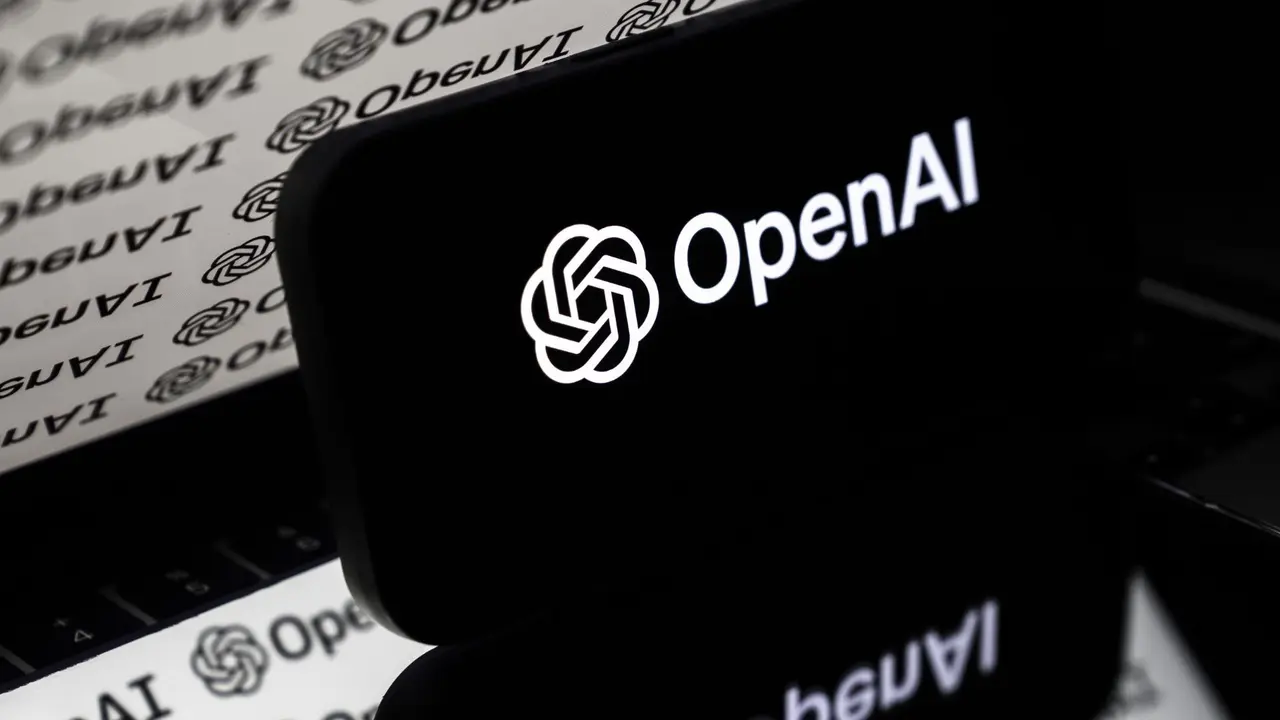Telegram's Pavel Durov Launches Cocoon: Decentralized AI Network Challenging Big Tech Dominance
4 Sources
4 Sources
[1]
Telegram Launches Cocoon: A Decentralized AI Network That Pays GPU Owners in Crypto - Decrypt
The project challenges Big Tech's dominance, positioning TON as an open, user-controlled alternative to AWS and Azure. Telegram CEO Pavel Durov took to the stage at Blockchain Life 2025 in Dubai on Wednesday to announce Cocoon, a decentralized AI compute network built on The Open Network (TON) blockchain that will pay GPU owners in Toncoin for powering private AI inference. The network, formally called the Confidential Compute Open Network, will launch in November with Telegram as its first major customer. Applications for GPU providers and developers opened immediately following the announcement. Cocoon creates a marketplace where individuals contribute computing power through their graphics processing units and receive TON cryptocurrency in exchange. On the other side, developers gain access to low-cost AI infrastructure that processes queries without exposing user data to centralized providers. This decentralized AI infrastructure is billed as a rival against the monopoly that Big Tech corporations like Amazon's AWS and Microsoft Azure have. In fact, Durov positioned the project as a response to eroding digital freedoms. Both Telegram and the TON blockchain were also conceived with this privacy-first approach in mind. The timing aligns with growing concerns about centralized AI systems. When companies like OpenAI or Google process your queries, they see everything -- your prompts, your data, your patterns, and metadata. Cocoon's confidential computing approach keeps that information encrypted throughout the process, even from the GPU owners doing the actual computation. Telegram's globally adopted platform provides immediate scale. The messaging app will integrate Cocoon across its ecosystem, powering AI features in its Mini Apps and potentially transforming how users interact with artificial intelligence daily. Max Crown, CEO of the TON Foundation, said the launch marks a shift toward an open, user-driven compute economy that returns control of AI infrastructure to users -- rather than corporations that exploit it. "Leveraging Telegram's billion-strong user base and TON's high-performance, scalable blockchain technology, Cocoon has the potential to redefine how billions interact with AI in their everyday digital lives," he said in a press release shared with Decrypt. "Cocoon is the convergence of social networking, AI, and decentralized technology at unprecedented scale." AlphaTON Capital, a Nasdaq-listed digital asset infrastructure and TON treasury company, announced its intention to make a "substantial investment" in all the hardware required to support the network. The company plans to deploy next-generation, high-memory GPU models across strategic data centers, supporting advanced model architectures including DeepSeek and Qwen. The project builds on TON blockchain's multi-chain architecture, which processes millions of transactions per second through its sharded design. The parties said this structure allows Cocoon to handle massive AI workloads while maintaining the transparency and market-driven pricing that blockchain enables. Decentralized AI networks have gained momentum as an alternative to tech giants. Projects like Akash Network and Render Network already let users rent distributed computing resources, though Cocoon's integration with Telegram's user base appears to be a big selling point. Like other decentralized cloud/storage networks, the market pricing will emerge from supply and demand dynamics as GPU owners and developers negotiate costs through the network. This creates potential for more competitive pricing than centralized cloud providers typically offer, though it also introduces uncertainty around service reliability and consistency. "In a world where centralized AI systems harvest data and concentrate power, Cocoon rebalances the equation by giving users control over their computation, privacy, and ownership," Crown said.
[2]
Telegram's Pavel Durov unveils decentralized AI network built on TON
The new project, dubbed Cocoon, aims to give users access to AI tools without surrendering their data to centralized providers. Pavel Durov, co-founder of the messaging application Telegram, has disclosed a new decentralized AI network to be built atop The Open Network (TON), an independent layer-1 blockchain associated with Telegram. Durov took the stage at the Blockchain Life 2025 forum in Abu Dhabi, United Arab Emirates, to announce the Confidential Compute Open Network, or Cocoon, created to give users access to AI-driven features without sacrificing data privacy to centralized AI providers. According to Durov, users can make the processing power from their graphics processing units (GPUs) available to the network, in exchange for receiving Toncoin (TON), the native token of TON. Durov also touched on why decentralized AI is needed for human freedom: "Why is it important to do something this way as opposed to the centralized way that is sometimes more convenient? It is important, my friends, because the world has been moving towards a weird direction. For the last 20 years. We've been gradually losing our digital freedoms." Decentralizing AI models has become a widely discussed topic among AI and blockchain developers due to privacy risks and the potential for centralized service providers to censor or distort critical information in real time, without users realizing it. Related: Telegram's Durov: We're 'running out of time to save the free internet' Centralizing artificial intelligence poses risks to user data privacy, including the risk of data breaches and hacks, according to several crypto and Web3 industry executives. Storing vast quantities of user data on centralized servers makes the data an attractive target for hackers, David Holtzman, chief strategy officer of the Naoris decentralized security protocol, told Cointelegraph. Centralized AI service providers could also shift algorithms behind the scenes or distort critical data in real-time to manipulate public opinion, some industry executives have warned. Blockchain technology can help verify that data produced by AI remains tamper-proof by using a decentralized ledger to record the origin and chain of custody of data, producing an immutable and provable digital record onchain.
[3]
Telegram Founder Launches Cocoon, a Decentralised AI Project on TON
Blockchain experts stress decentralised AI protects privacy Telegram founder Pavel Durov on Wednesday announced a new decentralised artificial intelligence (AI) network called the Confidential Compute Open Network, or Cocoon. It is built on The Open Network (TON), the layer-1 blockchain linked to the messaging platform. Durov raised growing concerns about data misuse by centralised AI providers at the Blockchain Life 2025 event in Abu Dhabi, stating that the project's core objective is to provide AI-powered tools that protect user privacy. This announcement marks Telegram's latest effort to expand its presence in the blockchain ecosystem while positioning itself at the intersection of AI and decentralisation. Cocoon Network to Reward Users for Contributing GPU Power Users can earn Toncoin, the native cryptocurrency of TON, by contributing computing power from their graphics processing units (GPUs) to the network under Cocoon. Durov said this model would ensure that users retain ownership of their data and digital activity, rather than surrendering it to large AI platforms. He emphasised the importance of decentralised AI in defending human freedom, pointing out that digital privacy has gradually declined over the past couple of decades. Durov's comments reflect growing sentiment among developers and privacy advocates who view centralised AI systems as vulnerable to exploitation. David Holtzman, chief strategy officer at Naoris, told Cointelegraph that a decentralised cybersecurity protocol claims that concentrating data storage in the hands of a few significant providers increases the risk of breaches and manipulation. Holtzman further added that the potential for service providers to alter or distort data in real time highlights the need for transparent systems built on decentralised ledgers. Blockchain technology can help keep AI-generated data verifiable and tamper-proof by recording its origin and movement on a distributed ledger. This lowers the possibility of censorship or false information and enables unchangeable evidence of data integrity. Telegram has already explored blockchain applications through initiatives like the launch of DOGS Coin, a memecoin introduced via the Telegram ecosystem. The project underscored the company's growing involvement in Web3 innovation and its ability to rally a vast user base around new decentralised ventures. Cocoon now builds on the same foundation, as part of Telegram's efforts to cement its position as a leading player in the convergence of AI, blockchain, and digital privacy.
[4]
Cocoon: Pavel Durov's Bold Plan to Free AI from Big Tech Control
* Cocoon is a TON-based decentralized AI compute market where GPU owners earn TON for providing said compute. * Telegram is Cocoon's first customer, planning to integrate the service this November across Mini Apps and chat features. * The network leans on confidential computing to protect data and resist the centralization of AI. * The reveal aligns with a broader, people-owned AI push echoed by Tether's Paolo Ardoino. Telegram founder Pavel Durov just unveiled the Confidential Compute Open Network (Cocoon), a decentralized AI compute network built on TON that pays GPU owners in crypto to run private AI workloads. This development is a direct challenge to the cloud monopolies that currently dominate AI. Cocoon Explained: Durov's privacy-first AI network on TON Speaking at the Blockchain Life forum in Dubai on Oct. 29, 2025, Durov introduced Cocoon as a privacy-first AI network that lives on the TON blockchain. His premise is simple: instead of funneling everyone's prompts, data, and model runs through clouds run by big tech, users can provide GPU power to the network and get paid in TON. From there, apps and developers can buy low-cost, private AI services, and Telegram itself will be Cocoon's first major customer. Durov said Cocoon will launch in November 2025. Durov Positions Cocoon as a Decentralized Alternative to Big Tech AI Today's artificial intelligence clients run on a closed, vendor-run supply chain: GPUs and data centers run by the Amazons and Googles of the world. While centralization is efficient when it comes to speed and up-time, it's also a chokepoint for high costs, censorship, and data control. If everyone's using AI run by a few companies, they're ceding control. Durov framed Cocoon as part of Telegram's mission toward digital freedom. A stance against centralization and the internet's risk of becoming "the ultimate tool of control," should infrastructure remain in the power of a few showrunners. Cocoon: Decentralized Compute Marketplace Powering Telegram's AI Future As a decentralized compute marketplace, Cocoon provides the following: * Decentralized compute market: GPU owners, which could be data centers or a single user, supply compute to Cocoon and earn TON for serving AI jobs. With over 1 billion monthly active users, that's a lot of potential power. * Privacy by design: Cocoon aims to push AI tasks into confidential computing environments via decentralization. * Competitive pricing: Decentralized AI services allow for competitive pricing, rather than users getting locked into a few expensive cloud offerings. * Telegram integration: Telegram's Mini apps system offers a slew of services usable within the chat app, with TON as the default payment system. Cocoon implementation will allow Mini Apps to utilize its AI services, keeping the entire process within the TON network. It's essentially Uber for GPUs. If you're looking to summarize an important document, running it through ChatGPT can be a massive privacy risk: it's stored on OpenAI's servers and could leak at any time. Cocoon matches your request with a verified GPU running inside a confidential compute environment, one specifically designed to protect your document. The provider can't peek. You pay the provider in TON, get the summary back, and the environment eliminates that session, wiping your data entirely. Tether and Telegram Align on a Shared Vision for People-Owned AI Cocoon echoes a view shared by Tether CEO Paolo Ardoino at the Plan B Forum in Lugano, that people should own AI, not corporations. "I want to see AI and robots happen," Ardoino told CCN's Lorena Nessi. "But I want people to own them, not corporations." Ardoino's team is building QVAC, an open-source execution layer that aims to make AI portable across hardware and networks. Think of it like an operating environment that runs AI models and agents directly on your device rather than a corporation's cloud network. Two solutions to the same problem: one offers a private marketplace, the other enables on-device use. How Cocoon Will Transform the Telegram Experience for Users and Developers If you're a Telegram user or developer, here's how your experience might change: * Private data: Developers can run custom Telegram bots without shipping user data to a third-party cloud. * Idle GPU utilization: Users with powerful GPUs can monetize downtime by lending idle power to Cocoon. * AI features: General users can expect AI features similar to X's Grok and other AI bots within Telegram. Only prompts run through Cocoon and not a centralized backend. Challenges Ahead: Balancing Decentralization, Governance and Economics in Cocoon's Model While Cocoon presents an ambitious vision for decentralized, privacy-first AI, its launch also raises several practical challenges. From maintaining service quality across a distributed network to addressing governance and economic sustainability, the platform will need to balance decentralization with reliability, compliance, and fair incentives to succeed. * Quality of service: As mentioned, centralization is great for efficiency. Can a decentralized network match the cloud-grade uptime and speed of a corporate-powered app? * Governance and policy: Durov himself has faced scrutiny from European authorities regarding alleged criminal activity on Telegram, and will likely receive some regulatory pressure around Cocoon's content and access. * Economic balance: GPU owners need payouts that cover the cost of electricity it takes to finish a job. Conversely, developers need stable TON pricing so they can budget for Cocoon operating fees. * Incentive: Providers need an incentive to finish longer jobs, especially if token prices jump. Can they just leave a big job midway and jump to smaller ones if TON shoots up in price? People-Owned AI is Becoming a Movement Durov's Cocoon and Ardoino's QVAC represent two different but philosophically aligned bets, both aiming to move AI out of centralized corporate clouds and into open networks and user-controlled environments. Whether the future of people-owned AI lies in a decentralized compute marketplace like Cocoon or an on-device execution layer like QVAC remains to be seen, but both underscore a growing movement to return digital power to individuals rather than institutions.
Share
Share
Copy Link
Telegram CEO Pavel Durov announced Cocoon, a decentralized AI compute network built on TON blockchain that pays GPU owners in cryptocurrency while protecting user privacy. The platform aims to challenge Big Tech's AI monopoly by offering confidential computing services.
Telegram Unveils Revolutionary Decentralized AI Network
Telegram CEO Pavel Durov took center stage at Blockchain Life 2025 in Dubai to announce Cocoon, a groundbreaking decentralized AI compute network that promises to reshape how artificial intelligence services are delivered. The Confidential Compute Open Network, built on The Open Network (TON) blockchain, represents a direct challenge to Big Tech's dominance in AI infrastructure .

Source: Decrypt
The platform creates a marketplace where individual GPU owners can contribute computing power and receive Toncoin cryptocurrency in exchange, while developers gain access to low-cost AI infrastructure that processes queries without exposing sensitive user data to centralized providers
2
.Privacy-First Architecture Addresses Growing Concerns
Durov positioned Cocoon as a response to eroding digital freedoms, emphasizing the importance of decentralized AI in protecting user privacy. "Why is it important to do something this way as opposed to the centralized way that is sometimes more convenient? It is important, my friends, because the world has been moving towards a weird direction. For the last 20 years. We've been gradually losing our digital freedoms," Durov stated during his presentation
2
.The network's confidential computing approach ensures that user information remains encrypted throughout the entire process, even from the GPU owners performing the actual computation. This addresses critical concerns about centralized AI systems where companies like OpenAI or Google can access all user prompts, data patterns, and metadata .
Market Dynamics and Economic Model
Cocoon operates on supply and demand dynamics, allowing GPU owners and developers to negotiate costs through the network. This market-driven approach potentially offers more competitive pricing than traditional centralized cloud providers, though it introduces questions about service reliability and consistency .
Max Crown, CEO of the TON Foundation, described the launch as marking "a shift toward an open, user-driven compute economy that returns control of AI infrastructure to users." He emphasized that leveraging Telegram's billion-strong user base and TON's scalable blockchain technology gives Cocoon "the potential to redefine how billions interact with AI in their everyday digital lives" .
Related Stories
Strategic Partnerships and Infrastructure Investment
AlphaTON Capital, a Nasdaq-listed digital asset infrastructure company, announced plans for substantial investment in hardware required to support the network. The company intends to deploy next-generation, high-memory GPU models across strategic data centers, supporting advanced model architectures including DeepSeek and Qwen .
Telegram will serve as Cocoon's first major customer, with plans to integrate the service across its ecosystem in November 2025. This integration will power AI features in Telegram's Mini Apps and potentially transform how users interact with artificial intelligence in their daily digital activities
4
.
Source: Gadgets 360
Technical Foundation and Blockchain Integration
The project builds on TON blockchain's multi-chain architecture, which processes millions of transactions per second through its sharded design. This structure enables Cocoon to handle massive AI workloads while maintaining the transparency and market-driven pricing that blockchain technology enables .
Blockchain technology helps verify that AI-generated data remains tamper-proof by using a decentralized ledger to record data origin and chain of custody, creating an immutable and provable digital record. This addresses concerns about centralized providers potentially altering or distorting critical information in real-time
2
.References
Summarized by
Navi
[1]
[2]
Related Stories
Tether AI: Revolutionizing Crypto with Decentralized Artificial Intelligence
16 May 2025•Technology

xAI and Telegram Forge $300M Partnership to Integrate Grok AI into Messaging Platform
28 May 2025•Technology

The Rise of Payable AI: Addressing Data Attribution and Fairness in Artificial Intelligence
04 Jul 2025•Technology

Recent Highlights
1
AI Chatbots Sway Voters More Effectively Than Traditional Political Ads, New Studies Reveal
Science and Research

2
Trump signs executive order to override state AI laws despite bipartisan pushback
Policy and Regulation

3
OpenAI warns upcoming AI models will likely pose high cybersecurity risk with zero-day exploits
Technology





